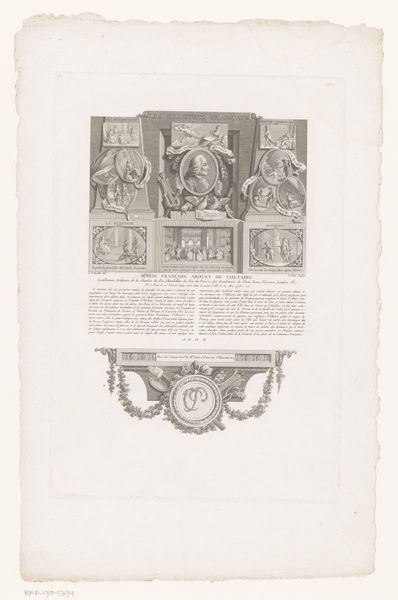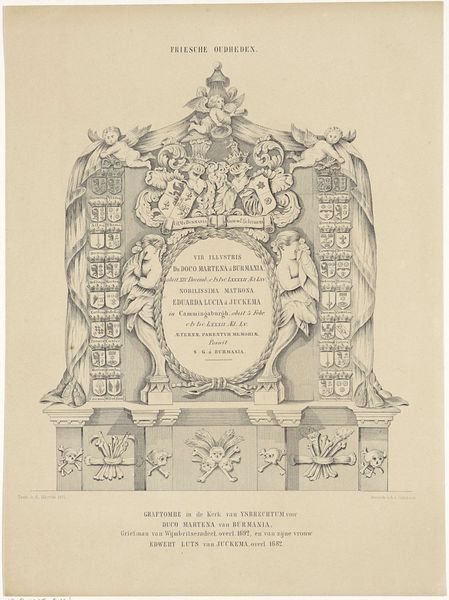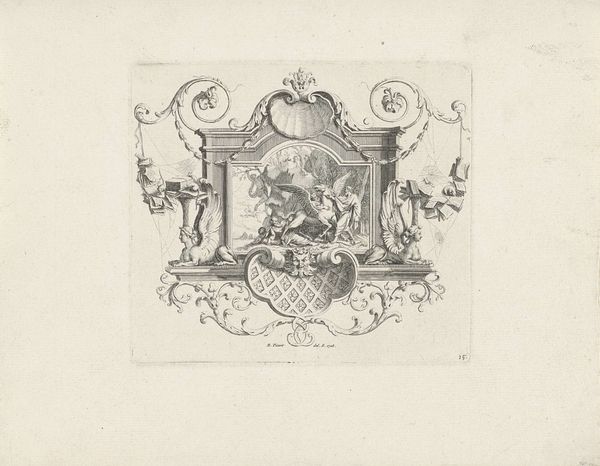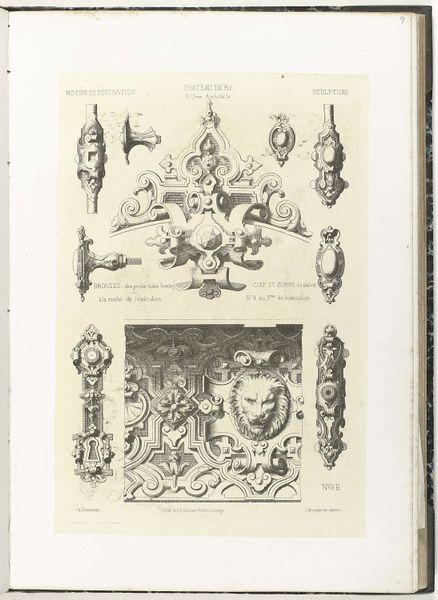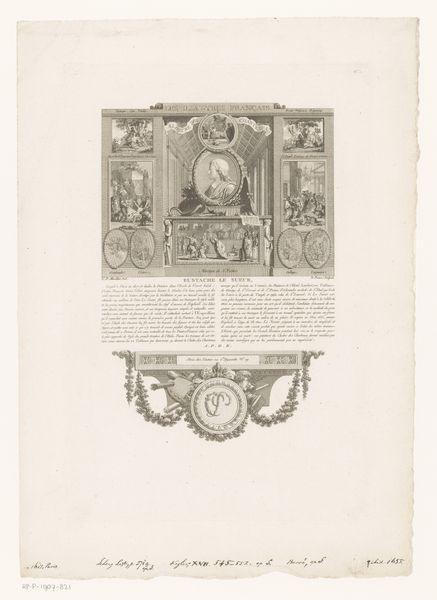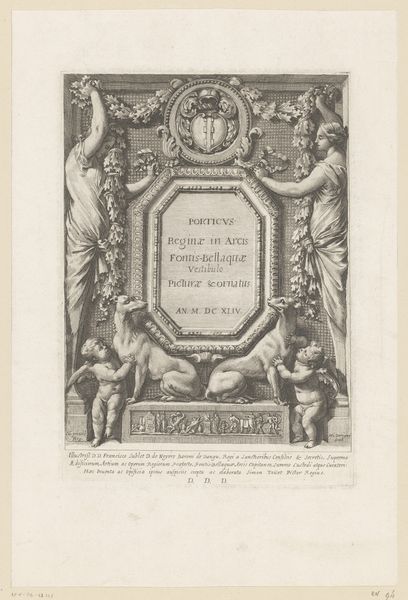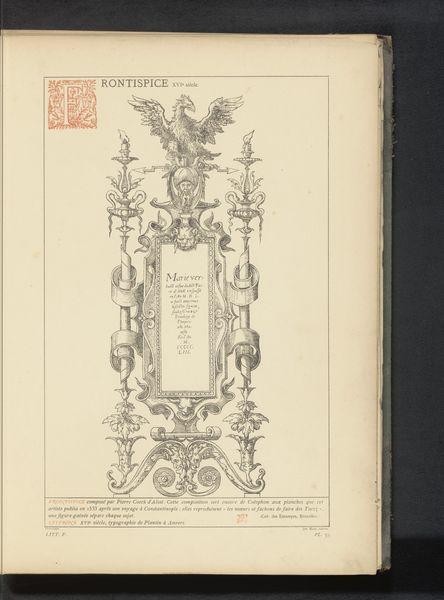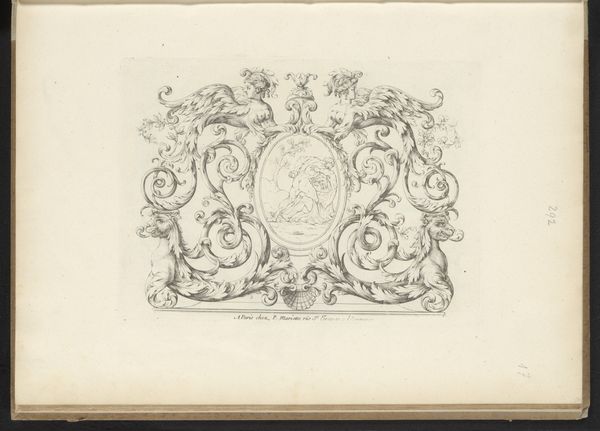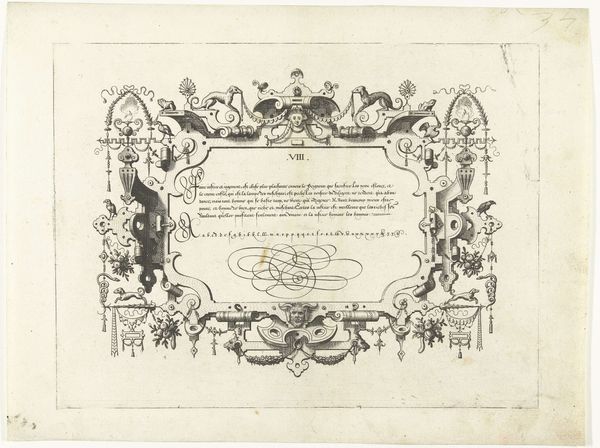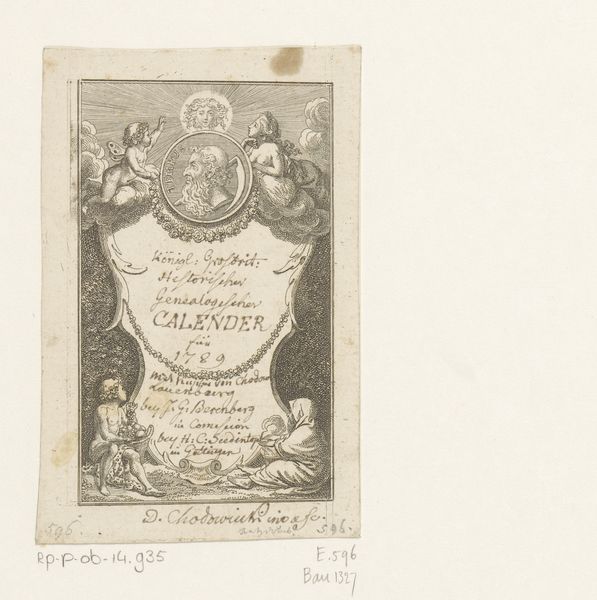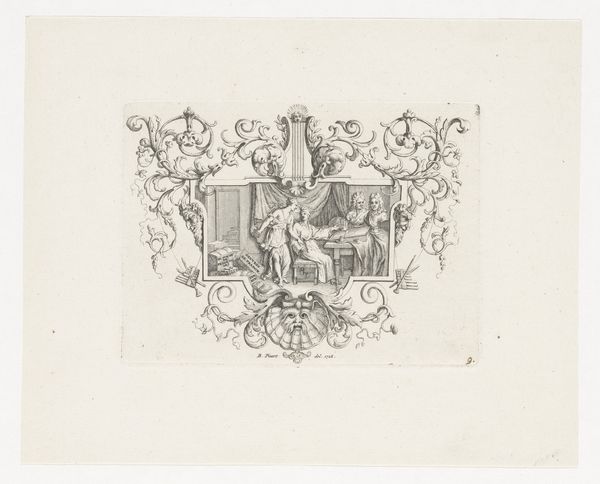
Dimensions: height 143 mm, width 241 mm
Copyright: Rijks Museum: Open Domain
Johannes Hilverdink created this print of two grave monuments, likely in the Netherlands in the early to mid-19th century. The elaborate designs, teeming with cherubs, skulls, and heraldic symbols, reflect enduring cultural fascinations with death and remembrance. These monuments serve as potent symbols of social status in their time. Notice the classical motifs and allegorical figures. They're not just decorative; they communicate specific virtues and achievements of the deceased, reinforcing social hierarchies. In the Dutch context, this kind of ostentatious display was often associated with the merchant class, eager to establish their legacy. Consider, too, that this print wasn't simply made in a vacuum. The Rijksmuseum, where it's now housed, plays a crucial role in shaping our understanding. It's an institution that carefully selects, preserves, and presents artifacts, thereby influencing what we value as culturally significant. To fully appreciate this print, further research into Dutch funerary practices, heraldry, and the social dynamics of the period is essential. The meaning of art is always contingent on social and institutional contexts, and historical inquiry is key to unlocking those meanings.
Comments
No comments
Be the first to comment and join the conversation on the ultimate creative platform.
